We have much more to do and your continued support is needed now more than ever.
11 Tips to Keep Your Indoor Cat Happy
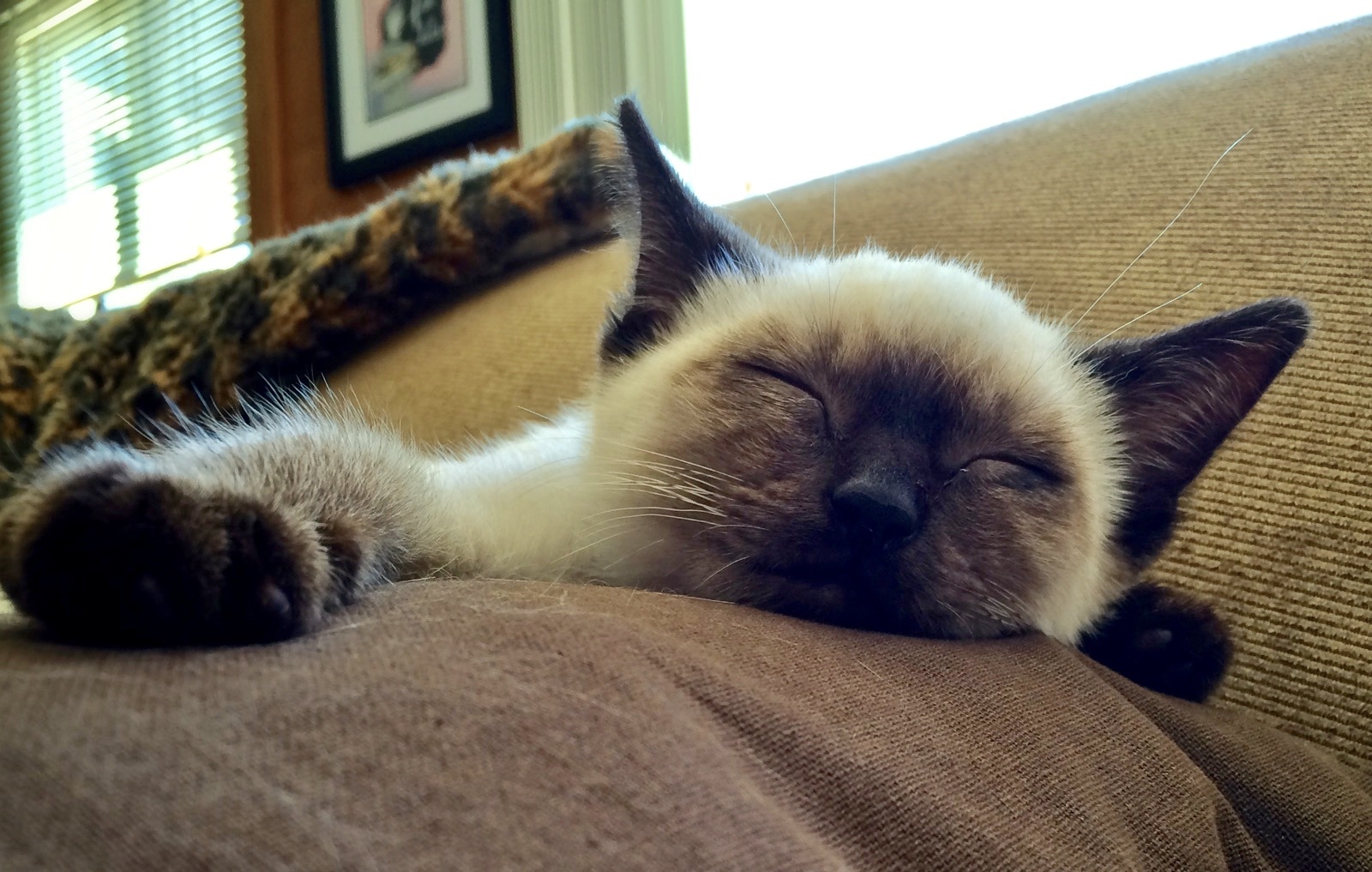
We recently published an article in National Wildlife magazine looking at the enormous toll that free-ranging domesticated cats take on wildlife in the United States. The latest study has conservatively concluded that between 1.3–4.0 billion birds and 6.3–22.3 billion mammals are killed annually by cats, making them one of the largest human-influenced sources of mortality for birds and mammals in the country.
Cats are not inherently villains, of course. They are beloved pets and for thousands of years have been used as working animals to help control rats and mice that are urban and farm pests. When domesticated cats prey on wild birds and other wildlife they are simply following their natural instinct. Ecologically, however, the effect of that predation is anything but natural and has even resulted in the wildlife extinctions. As a species imported by humans around the globe and supported by us in numbers dwarfing that of natural predators, the massive predation by cats on wildlife is an extension of our own negative impact on our environment. It’s up to us to prevent it.
One thing we can all do to help solve this problem is to keep our pet cats indoors. Not only is this better for wildlife, it’s also better for our cats. Outdoor cats face threats from predators, cars and disease and as a result, have much shorter lifespans compared to indoor cats. Keeping your cat indoors is a win-win for both wildlife and cats.
That said, we recognize that keeping your cat indoors can be easier said than done. Speaking from personal experience, turning an outdoor cat into an indoor one can be a challenge, even for naturalists and experienced pet owners like me. I once adopted an outdoor cat that I tried to keep indoors, only to have him start using my bed as a litter box until I let him back outside. Don’t beat yourself up if you find yourself in this situation–again, our goal is not to villainize cats or cat owners–but now that you know the major toll cats take on wildlife, the right thing to do is to make the commitment to do everything you can to keep your cat indoors and also to start off your next kitten as an indoor cat from the beginning.
Here are our tips for keeping your indoor cat happy and healthy.
A Tired Cat is a Happy Cat
Cats are natural athletes and it’s all too easy for an indoor cat to go stir crazy if it can’t work out that excess energy. The good news is there’s no shortage of awesome cat toys that will keep your cat moving. There are toys that look like mice, toys with feathers, battery-powered toys with flashing light and sound, laser pointers, toys that move, toys on strings–everything that you need to help keep your cat pouncing and stalking safely indoors.
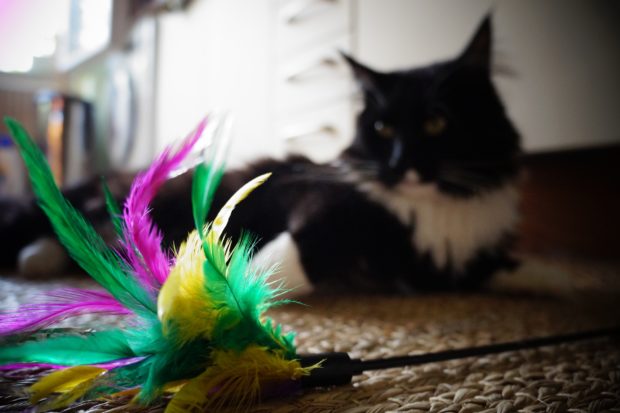
Bird Viewing Stations
The reason that domesticated cats kill so many birds and small mammals is that those animals are the natural prey of their ancestor, a small wild cat species found in parts of Africa, Asia and Europe called the wildcat (Felis silvestris). Even well-fed pet cats still retain the wildcat’s natural attraction to small animals. You can indulge that attraction by setting up a bird viewing station inside. Simply install a cat window perch and put up a bird feeder or bath right outside the window. Your pet cat will have hours of viewing pleasure and the wildlife will be safe. An added benefit is that placing feeders and baths close to windows helps reduce bird window strikes, another significant source of bird mortality. (You can order a variety of bird feeders and baths from our catalog, sales of which go directly to support our wildlife conservation programs.)
Let Your Cat Go Hunting
Cats are inherently curious animals. If an indoor cat doesn’t have enough stimulation indoors it’s going to get bored and try to get outside. In addition to toys, you can help your cat exercise its natural hunting instinct by hiding its favorite treats around the house. Freeze treats in ice cubes or use special cat treat puzzles and toys that make your cat work to extract its reward to offer hours of mental stimulation. These are the same enrichment tactics used to keep lions, tigers and other predators in good mental and physical condition in zoos.
Pets in Pairs
Few of us can be home all day to love on our cats, so consider getting a second cat as a companion. Having a buddy to run and play with can go a long way in keeping indoor cats happy and stimulated. There’s no shortage of homeless cats at your local shelter just waiting for someone to take them home.
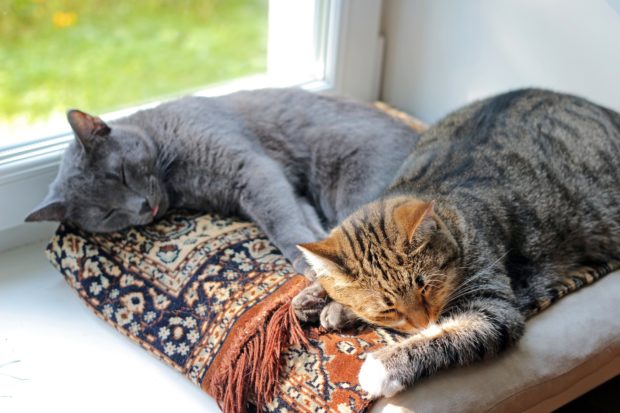
Use Catnip
Catnip is a plant in the mint family (Nepeta cataria) that contains a natural oil called nepetalactone which has a unique effect on cats. When inhaled, nepetalactone is interpreted by the feline olfactory system as a natural cat pheromone. When cats rub on or chew catnip, it produces a mild natural high that is both harmless and temporary, but that is pleasurable to cats. Not all cats are affected by catnip, and it has no effect on kittens under six months of age, but if your cat does respond to it, it can be one more tool to help keep your indoor cat stimulated and happy. Catnip comes in dried form to fill sachets or special cat toys, as well as in spray form to mist toys or cat beds. You can grow catnip plants in pots in a sunny window for your kitty too. Everything in moderation, right?
Stop Door Dashing
Watch this segment on NatGeo WILD’s Pet Talk for my tips on how to keep your cats from dashing out the door.
Let Your Cat Climb
Wild cats are natural climbers, pursuing prey into the trees and seeking high places when frightened. Your pet cat retains those same climbing instincts. Cat trees are a tried and true way of allowing your cat to exercise its urge to climb, and they come in all shapes and sizes to fit your space and decor. If you’re handy, you can build your own. Take it to the next level by adding “cat shelves” throughout your home to take advantage of vertical space for your feline family members. It can be as simple as a few floating shelves mounted to the wall or more involved “catwalks” that wrap around entire rooms. Either way, cat shelves will allow your kitty to get up high and go places only cats can go.
Go for a Walk
It might sound crazy and be the subject of hilarious YouTube videos, but believe it or not it is possible to train your cat to walk on a leash. If you must let your cat outside, this is the most responsible way to do it. It’s easiest to start training your cat when it’s just a kitten, but even older cats can learn. Start by getting your cat used to wearing a harness for short periods of time indoors, then move on to attaching the leash and rewarding the cat with treats when it walks with you. Never pull on the leash. Once the cat is comfortable with the harness and leash, it’s time to try it outside. Start slowly, with just short trips outside and gradually increase the length of the walks as your cat gets more comfortable. If it’s too much of a challenge, work with a professional animal trainer. Remember, the idea of walking dogs on leashes once seemed weird, but now it’s the standard. We can do the same with cats.
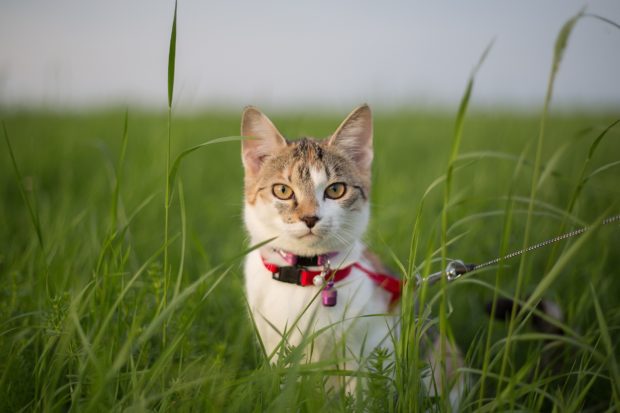
Build a Catio
Another way to give your kitty some fresh air is to install a “catio.” A catio is an enclosed structure that you can install in your yard or on your deck or patio to give your cat some time outside without having to put it on a leash or putting wildlife in danger (or your cat in danger from wildlife). Think of it like of like a cat playpen, or the cat version of an outdoor dog run. You can purchase premade catios or plans, hire a contractor to build one, or just do it yourself.
Spay and Neuter
Always spay and neuter your pet cats. Intact cats can be driven by hormones to try to escape outside to try to find a mate. By spaying and neutering, you eliminate this added stress on your pet cat while at the same time minimizing the allure of the outdoors and eliminating any chance that it could contribute to the unwanted cat population.
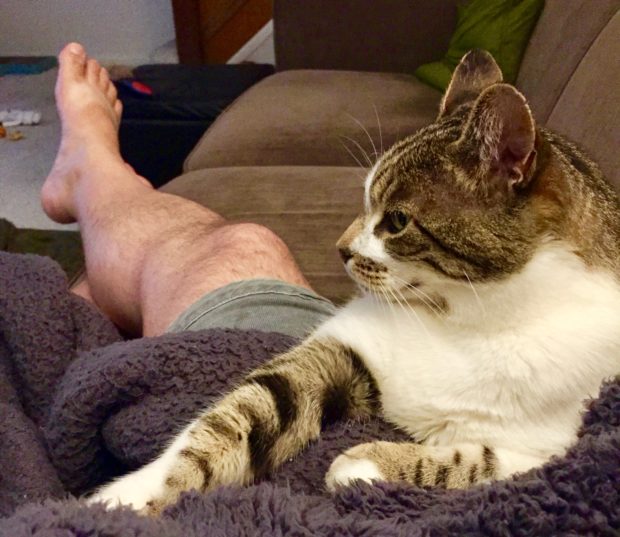
Love Your Cat
This last one is simple. You love your cat, and that love can be the most powerful tool you have to keeping it happy. Unlike their wild ancestors, domesticated cats crave human attention. Often the most effective way of keeping your indoor cat happy is to just pay attention to it. Snuggle your cat, pet your cat, and play with your cat every day. You’ll be surprised at how far a little attention from its human can go in ensuring your indoor cat’s wellbeing.






















